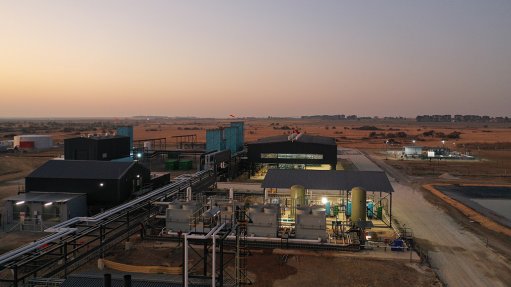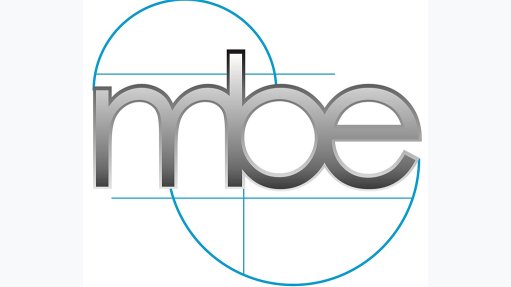UKZN using automated solution to monitor, support students' academic and holistic wellness
The University of KwaZulu-Natal (UKZN) has piloted an automated student academic and holistic wellness solution among 9 000 students in the College of Health Sciences and aims to roll the solution out to the entire university of 53 000 students, UKZN student support services manager Dr Saloschini Pillay has said.
The automated student wellness and academic transformation (SWAT) programme evolved from the Teaching and Learning and Student Support Services, and the Academic Monitoring and Support programmes the university put in place in 2005 to support especially first-year students through regular engagement.
"The key objective of the solution was to promote student engagement with support services to ensure sustainable academic success and holistic wellness. Our priority in higher education is the throughput of graduated students. It is about knowledge creation, but we want students to enter and exit the university.
"However, student success is not only about marks tracking. Success is now more than just a pass mark or a degree certificate. We need people who will be successful across the world. Holistically well students are successful across multiple dimensions, and this captures the student experience at university," she explained.
The key functionality of the system is automated communication and wellness profiling by the system.
It also identifies levels of priority based on students' answers to the orientation questionnaire, and students receive notifications, short messages and reminders about counselling.
Further, the system automatically assigns tasks to mentors, tutors and staff throughout the student support layers, including in the event of escalations.
Each priority level also includes turnaround times. The support programme includes face-to-face interaction, as well as hybrid interactions and communications.
"Priority one and two cases are referred directly to student councillors, either for an in-person consultation or as part of a referral. Priority one cases are escalated if they have not seen progress within 16 hours," she illustrated during a presentation earlier this month.
The need to promote student engagement was the major impetus for the development of the solution, said Pillay.
"Academic and student wellbeing, or students' success, must be viewed through the lens of equity and inclusion. Students are from diverse backgrounds, many with unique challenges and historical experiences that lend different perspectives to the university environment," she added.
An inclusive environment and equitable access to resources, as well as personalised support, would enable all students to thrive irrespective of their socioeconomic status or background, Pillay emphasised.
A key challenge with the student support programme introduced in 2005 was that it was manually intensive and reviewing and consolidating the large amount of data was inefficient. The need to ensure effective student engagement also led to the development of an automated system, she pointed out.
"The paper-based system of contact sessions was transitioned to various online platforms and tools to track and monitor student wellness. Many of the designs in the automated system were informed by the university's student support experiences over the years," she said.
The aim is to support students from their first year, which is a critical year because students could prematurely drop out or struggle to cope. It is important to give them motivation and sustained support in their first year of study.
The process of engagement started on the very first day that students enter the university. The students met with other students and wellness mentors and tutors, and all the layers of support in the university as part of orientation, she said.
Mentors were the first responders and served as a conduit between support services and students. It was the skilled front-line support teams that enabled students to continue with and successfully complete their studies, Pillay noted.
"The purpose is to onboard and support students as they transition into the lecture space. Engagement is also continuous throughout the year and moves across the different components of the support services offered to students.
"In March, we do wellness assessments where we identify critical factors that place students at risk of not progressing academically or in terms of their wellness," she said.
Each student's wellness profile is divided into four domains, of which academic wellness is one.
"For reporting on student support, it is necessary to process critical data for interventions. The risks to students' wellness also change during the year, and physical and social risks may be higher in the early parts of the year, while academic risks are higher later in the year as exams approach," she noted.
From the reports, holistic support interventions are created using various role-players in the university environment and tailored to meet a student's needs. This multipronged intervention is then uploaded as a book to the Swat workshop.
The interventions can include psychological therapy or learning support and referrals, among others.
"The aim is for holistic and integrated collaboration to support student success and wellness," Pillay said.
The analytics in the system provide real-time data and the ability to respond proactively or potentially pre-emptively to triggers.
The primary gains from the digital Swat programme include automation, timeous support and tracking. Additionally, the programme integrates student and intervention data, and aligns with the university's policy on academic monitoring and support.
Article Enquiry
Email Article
Save Article
Feedback
To advertise email advertising@creamermedia.co.za or click here
Comments
Press Office
Announcements
What's On
Subscribe to improve your user experience...
Option 1 (equivalent of R125 a month):
Receive a weekly copy of Creamer Media's Engineering News & Mining Weekly magazine
(print copy for those in South Africa and e-magazine for those outside of South Africa)
Receive daily email newsletters
Access to full search results
Access archive of magazine back copies
Access to Projects in Progress
Access to ONE Research Report of your choice in PDF format
Option 2 (equivalent of R375 a month):
All benefits from Option 1
PLUS
Access to Creamer Media's Research Channel Africa for ALL Research Reports, in PDF format, on various industrial and mining sectors
including Electricity; Water; Energy Transition; Hydrogen; Roads, Rail and Ports; Coal; Gold; Platinum; Battery Metals; etc.
Already a subscriber?
Forgotten your password?
Receive weekly copy of Creamer Media's Engineering News & Mining Weekly magazine (print copy for those in South Africa and e-magazine for those outside of South Africa)
➕
Recieve daily email newsletters
➕
Access to full search results
➕
Access archive of magazine back copies
➕
Access to Projects in Progress
➕
Access to ONE Research Report of your choice in PDF format
RESEARCH CHANNEL AFRICA
R4500 (equivalent of R375 a month)
SUBSCRIBEAll benefits from Option 1
➕
Access to Creamer Media's Research Channel Africa for ALL Research Reports on various industrial and mining sectors, in PDF format, including on:
Electricity
➕
Water
➕
Energy Transition
➕
Hydrogen
➕
Roads, Rail and Ports
➕
Coal
➕
Gold
➕
Platinum
➕
Battery Metals
➕
etc.
Receive all benefits from Option 1 or Option 2 delivered to numerous people at your company
➕
Multiple User names and Passwords for simultaneous log-ins
➕
Intranet integration access to all in your organisation



















